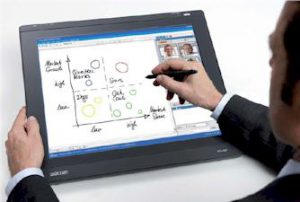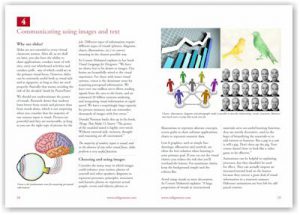Argues the case that it is pointless training l&d professionals to create fully self-contained online courses, a job best left to specialists. However, l&d professionals do need to know how to create simpler forms of digital learning content.
I am becoming increasingly aware of the the need to make clear a distinction between the broad concept of digital learning content, in all its many varieties, and the much narrower idea of interactive tutorials of the traditional CBT (computer-based training) variety.
In the former category I’d put the following:
- how-to guides
- slide shows, with or without narration
- podcasts
- videos
- software demos
- quizzes
- polls
- learning games
- visual aids
I’d say that every l&d professional should have at least a basic level of competence in the design and development of digital learning content, at least those forms of content most relevant to the learning domain for which they are responsible. This is no more than a natural evolution from their traditional responsibility for the production of PowerPoint slides and handouts which support most classroom events.
What this is not saying is that l&d professionals need to be able to create interactive self-study courses which completely replace their face-to-face predecessors. While some trainers will have the aptitudes and interests which will help them to excel in this area, in most cases this will remain a job for specialists. It is much, much harder to create a set of fully self-contained instructional materials than it is to develop the components – the explanations, the examples, the demonstrations, the practice exercises, the assessments.
Unfortunately, most attempts to train l&d professionals in the design and development of digital learning materials begin and ends with the assumption that the end result will be a self-contained tutorial. Because it is typical to try and achieve this in a couple of days with only a minimal amount of practice, these interventions are very unlikely to lead to any useful level of competence and will most likely only reinforce the idea that this is a job to be put out to full-time instructional designers.
What is much more feasible and much more useful is to concentrate on far simpler forms of content:
- taking an existing slide show and converting it into a self-contained resource
- using screen capture software to make a software demo
- using a simple audio editor to record and edit a podcast
- creating interactive learning resources (Articulate Engage is great for this)
- developing a quiz
- taking publicly-available content such as YouTube videos and topping and tailing them to act as learning resources
The way I see it, the idea of rapid e-learning needs to work at two distinct levels:
- The use of rapid tools and processes by e-learning professionals to create fully self-contained e-learning courses.
- The development of simple digital learning components by l&d generalists and subject experts, for use as classroom aids, reference materials and elements in blended solutions.
What’s needed is more training and encouragement to support the latter, rather than a futile attempt to develop advanced levels of instructional design expertise across broad swathes of the l&d profession.




